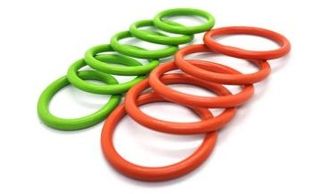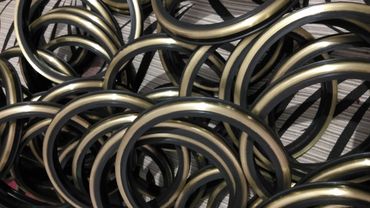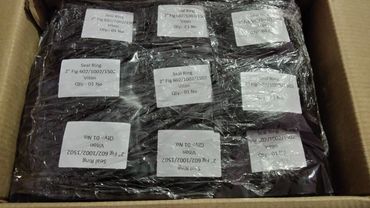O-RING AND SEAL RINGS
What is an O-ring and Seal Ring?
What is an O-ring and Seal Ring?
What is an O-ring and Seal Ring?
You could argue that the O-Rings and Seal Rings are a bit of a ‘living fossil’ in terms of manufacturing components. They were first brought to market way back at the dawn of the 20th century - and yet, for all their absolute simplicity and the very basic nature of the role they perform, they’re still incredibly widely used today.
How do they work?
What is an O-ring and Seal Ring?
What is an O-ring and Seal Ring?
In very basic terms, o-ring seals work by sitting in a groove or channel between two surfaces/components that are going to be mated or pushed together. The o-ring, generally made of some form of elastomer, sits in the join between these two parts, and becomes compressed in order to help form a tight seal.
How to use O-ring and Seal Ring
What is an O-ring and Seal Ring?
How to use O-ring and Seal Ring
They’re used with static, dynamic, hydraulic and pneumatic components, making them an especially versatile solution to a very widespread engineering issue. One of the key strengths of an O-ring-type seal is that after the parts it joins are disconnected and the compression forces acting on it are removed, it will return to its original shape.
What are O-ring and seal Rings used for?
For High Temperature Sealing
Materials for High Temperature
Materials for High Temperature

High-temperature sealing o-rings are, as the name implies, designed to withstand extreme heat while continuing to provide a reliable seal between two surfaces or components.
Materials for High Temperature
Materials for High Temperature
Materials for High Temperature
There are a number of popular high-temperature o-ring material choices, including nitrile, hydrogenated nitrile, silicone rubber, polyacrylate and more.
Temperature Ranges
Materials for High Temperature
High-Pressure sealing
Again, all industrial o-ring purchases should be carefully planned with direct reference to the specific role and environment the seal is required to perform in.
High-Pressure sealing
High-Pressure sealing
High-Pressure sealing

For a high-pressure seal to work to optimal levels, o-ring design and manufacture again depends on choosing specific materials for better performance under specific conditions.
Seals for Engines
High-Pressure sealing
Seals for Plumbers

For use in an engine, an oil o-ring has to be created specifically from compatible hybrid materials that allow it to maintain crucial o-ring properties (flexibility, incompressibility) while offering more robust resistance to heat, pressure, o-ring leaking and chemical attack than a standard elastomer typically could.
Seals for Plumbers
High-Pressure sealing
Seals for Plumbers

Plumbing o-ring choices are widespread, given the range of materials, sizes and gauges available for use in ducting and pipework applications, as well as to form tight waterproof seals around taps and other fittings .
Food Grade Seals
Seals for CO2 (H2S) Sour Gases
Seals for CO2 (H2S) Sour Gases

Food-grade o-rings have been manufactured to more exacting standards of material composition, such that they’ve been officially declared ‘food safe’ for use in the production and preparation of meals, beverages and dining products.
Seals for CO2 (H2S) Sour Gases
Seals for CO2 (H2S) Sour Gases
Seals for CO2 (H2S) Sour Gases

Some popular choices for use in applications where the o-ring will have extended CO2 contact include polyurethane, PTFE, nitrile, and fluoroelastomers. However, the best choice will always depend on the consideration of other environmental or application factors.
Seals for Aircrafts
Seals for CO2 (H2S) Sour Gases
Seals for Aircrafts
Aircraft o-rings and aerospace o-rings generally need to be highly chemically resistant, and able to operate within a wide range of temperatures and pressures in order to keep an aerospace craft’s powertrain running cleanly, efficiently and smoothly.
Photo Gallery


















Cookie Policy
This website uses cookies. By continuing to use this site, you accept our use of cookies.